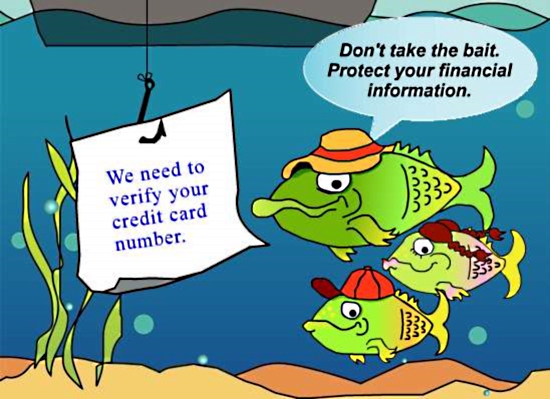
By Chris Mayhew
As technology continues to advance we are becoming more and more comfortable with it running our lives for us. However, this does mean that we are more susceptible to the people out there who are trying to take advantage of this to gain any information that they can use for their gain, or in some cases, merely to cause havoc with our devices.
Technology and security scams have been on the rise in recent years and experts are encouraging us to be more and more vigilant, as both the technology we use and the hackers trying to infiltrate it get more intelligent.
Here are four common tech scams and how best to avoid getting caught by them.
Phishing
Phishing is the general term given to any scam that chances its arm and tries to get you to simply hand over your login details or bank accounts unknowingly. This is usually done via email and the message will state that you need to verify your account details for some reason or that your account has been hacked, and unless you send your details in an email; the hacker cannot be stopped.
The main thing to remember here is that no real company is going to contact you regarding this important information via email. If you are at all unsure about handing over your passwords or other information, then speak to them first to see if the request is legitimate.
But avoid calling any number given to you in the email, as these are usually set up by the hacker and calling them will put you through to them and not the company you think you are contacting.
Security Software Pop-ups
Hackers are even taking advantage of our need to prevent security issues on our computers and have devised many schemes that target people using security software. This scam will present itself as a pop-up on your computer telling you that a virus has been discovered and that you must click the link below in order to download an application to cure it.
The best way to avoid this situation is to install trusted anti-virus software from the start. Do some research into the best applications for your PC and install this before anything else. Then if you receive a pop-up form an unknown source or a company other than the one you use for your anti-virus software; you will know it shouldn’t be trusted.
Social Media Ploys
Social media is used by so many of us on a daily basis and this means that we are far from safe when using our accounts. The trouble with cons of this kind is that they seem to be coming from one of the most trusted sources there is; your friends. Hackers who gain access to your friends’ accounts will then send you private messages that appear to be harmless enough, but in actual fact, will download malicious files onto your device. The message will usually say something along the lines of ‘can’t believe I saw you here…’ or ‘have you seen this?’ followed by a link that is just begging to be clicked.
You can avoid falling foul to this in a number of ways. Firstly, take a look at the URL of the link. It will usually be something messy with just a bunch of numbers and letters in a random order and this should flag that something’s up straight away. Secondly, ask yourself if this is congruent with the person who is seemingly sending you the message. Would they contact you like this? When was the last time they actually spoke to you? If you still have any doubts, contact them through another medium and ask whether they actually sent it or not.
Dangerous Smartphone Apps
Recent statistics suggest that one-in-five of us now owns a smartphone and it’s clear to see that technology of this kind, which is marketed everywhere by PR companies, has well and truly embedded itself in our lives. This in turn poses a great opportunity to hackers, as they search for new ways to infiltrate your security and gain access to personal information.
The latest ruse involves apps which, when downloaded, will begin sending premium rate messages to the criminal; incurring major costs to the user. And the worst thing is that you may not even know this is happening as it occurs in the background of the phone’s infrastructure.
The only way to avoid this is to be vigilant with the apps you install. If an app usually has a cost in order to download it but you have found a version that is offering it for free, then the chances are that it could be suspicious. It’s also important that you check your monthly bills so that you can catch any unusual payment activity before it gets any worse.

